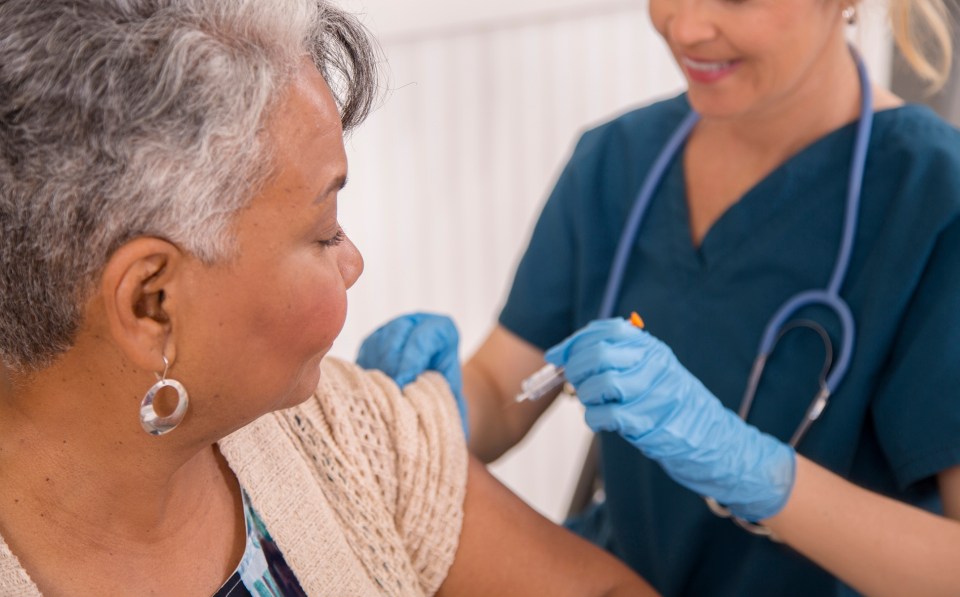At its core, healthcare is a physically demanding industry—more so than one might realize at a glance.
Rising obesity rates means more demanding patient transfers, and the repetition of those transfers, regardless of patient weight, coupled with long stints of standing can lead to physical injury when proper techniques are not applied consistently. To reduce pain of these injuries, opioids may be prescribed by an employee’s personal physician in a workers’ compensation claim.
In addition to the many steps Encompass Health has taken to educate its patients about the risks of opioids and assist them in identifying effective non-pharmacological methods to manage pain, Encompass Health is also working to ensure its employees who may be prescribed opioids in connection with a workers’ compensation claim understand the risks. In these cases, Encompass Health’s workers’ compensation division wants employees to be able to make the best choice for their healing and recovery through education and, when necessary, third-party intervention.
Combatting an epidemic
According to the National Institute on Drug Abuse, roughly 21 to 29 percent of patients prescribed opioids for chronic pain misuse them, and between 8 and 12 percent develop an opioid use disorder.
As a small but meaningful step to combat this epidemic, Encompass Health is working to educate employees on the dangers of opioids prior to use.
Starting in 2018, through third party administrator York, employees prescribed an opioid for a worker’s compensation claim from their personal physician receive a fact sheet mailed directly to their home. These fact sheets provide background on safe use and details on the risks and potential side effects.
“Knowledge is power,” said Suzy Braden, workers’ compensation claims manager at Encompass Health. “As we know, opioids are so addictive, and we want employees to have all the information before they begin taking a prescription.”
The social component of recovery can’t be understated, Braden said, which is why the workers’ compensation team also encourages return to light-duty work as soon as an employee is able.
“The employee is getting what they need clinically, but they also benefit from remaining involved in their employment,” Braden said. “What our nurses, techs and therapists go through every day is pretty strenuous, so we want to balance that in recovery.”
Monitoring for misuse
Employees who receive opioid prescriptions from their physician during a workers’ compensation claim are also monitored for longevity of use. Should the medication be used longer than is deemed clinically appropriate, third-party peer-to-peer reviews may be ordered. During these medical round tables, physicians and pharmacists evaluate cases and provide feedback to the prescribing physician to discourage the continuation of opioid use.
Of course, Braden said, doctors never deprive an employee with a documented need, but through clinical round tables and peer reviews, physicians encourage patients to switch to an alternative form of medication, such as anti-inflammatories or over-the-counter pain medication.
Participation in cognitive behavioral therapy is also an option to help those injured on the job manage pain without the use of pharmaceuticals.
A focus on wellness
The increased attention on opioid use comes from a focus on overall employee wellness, Braden said, as the Company wants a workplace injury to impact employees as minimally as possible. Monitoring usage can help avoid any cross-reactions between opioids and existing prescriptions, and early intervention in cases that exhibit red flags could prevent long-term misuse.
The biggest piece of prevention of opioid use is prevention of initial injury, Braden said. To improve employee safety, Encompass Health created and implemented its safe mobility program, STOP—Stop, Think, Organize and Position—in 2014. The first part of the program teaches all employees basic injury prevention techniques. STOP 2 trains clinicians in a safe patient transfer protocol.
“Prevention is the best medicine,” Braden said. “But if something happens, we’re here to get our employees back to work and back to living.”
The content of this site is for informational purposes only and should not be taken as professional medical advice. Always seek the advice of your physician or other qualified healthcare provider with any questions you may have regarding any medical conditions or treatments.



